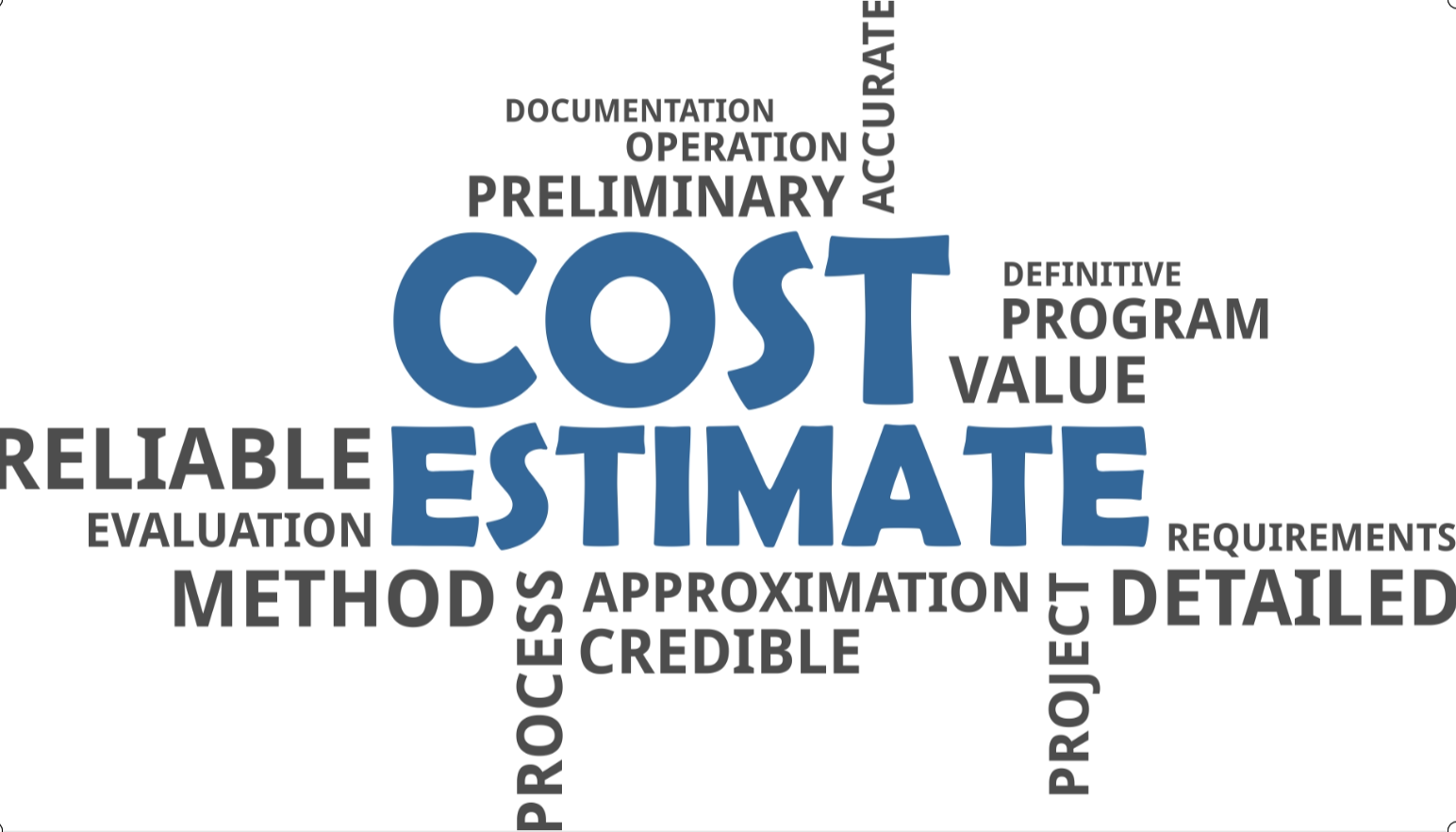
by John McCarthy Consulting Ltd. | Nov 27, 2020 | Blog, News
Following our blog last week about the three new audit standards effective for 31 December 2020 audits, this week we look at the new going concern standard which triggers a new style audit report. Since this standard was revised in October 2019, there is a new added layer of complexity i.e. the uncertainty surrounding the ultimate outcome of the Coronavirus (COVID-19) pandemic and its financial consequences.
Changes in ISA 570 Going Concern
There will be plenty of additional documentation required of management and the auditor, including 29 requirements for auditors versus 23 in the previous standard.
The auditor will be required to:
- ‘Challenge’ the going concern forecasts /projections prepared by management with a greater degree of robustness than heretofore. This challenge needs documentation to prove that the auditor is sufficiently sceptical.
- Evaluate management’s forecast methodology to assess the entity’s ability to continue as a going concern. The auditor will also be required to determine whether the calculations used by management is sufficiently robust and founded on reliable assumptions.
- Verify the relevance/reliability of the underlying data used by management.
- Appraise management’s future strategy for going concern and determine whether the outcome is likely to be successful or not.
- Consider whether any facts / information available since the period end would influence management’s going concern assessment.
- Obtain written representations from management regarding the feasibility of their future going concern strategy plans.
- Assess whether there is any ‘management bias’ (defined as ‘a lack of neutrality by management in the preparation of information’ paragraph 9-2) evident in their assessment of going concern, including whether judgments / decisions made by management during the assessment preparation process could indicate the presence of possible management bias.
- Carry out a ‘stand back’ assessment where the auditor must consider all the evidence obtained, including corroborative / contradictory evidence, when evaluating going concern. This evidence will form part of the auditor’s challenge to management’s assessment of going concern. There is a similar requirement in the new ISA 540 standard, as discussed in last week’s blog.
These changes trigger significant additional documentation requirements for the auditor including paragraph 26-1 which has a list of five specific matters that must be documented on the audit file, not all of which are new, but will require special attention to comply with the standard. Two new Technical Alerts are due shortly from Chartered Accountants Ireland, and expect new audit programmes in the early part of 2021, dealing with the changes in ISA 570 and 540.’
Coincidentally, in the last week the Financial Reporting Council (the UK audit regulator) issued a letter to the heads of audit firms entitled ‘FRC’s review of firms’ audit of going concern assessments’ where they quote examples of good audit practice from a sample of eleven audit reviews carried out since the Coronavirus (COVID-19) struck.
Among the examples was where the auditors’ assessment included a review of management’s evaluation of historical data from the previous financial crisis, to assist in the assessment of the economic impact of Covid on the business in the forecasts and the reasonableness of the scenarios developed. Another good example was where reverse stress testing and scenario testing were used in the assessing whether there was a material uncertainty.
Quoting from the letter ‘ICAEW guidance states that “a reverse stress test is a stress test that starts from the opposite end, with the identification of a pre-defined outcome. This might be the point at which an entity can be considered as failing, or the entity’s business model becomes unviable. Severe, but plausible, scenarios that might result in this outcome are then explored”. More on this in a future blog.
ISA 570 also triggers a new wording for the audit report. More on this next week.
The changes to ISA 570 come into effect for the audit of accounting periods commencing 15 December 2019 which, in practical terms, means audits for periods ending 31 December 2020.
For a complete list of our time-saving engagement letter templates for FRS 102 audit, FRS 102 audit-exempt, VAT, visit our store here. All our engagement and representation letter templates are up to date for Brexit and Covid-19.

by John McCarthy Consulting Ltd. | Nov 23, 2020 | Blog, News
There are important changes to three audit standards affecting 31 December 2020 audits. One of the changes will result in a new template for company reports (more on this in coming weeks) and all three standards will trigger the need to change audit programmes in line with the new requirements.
This week we will deal with the first of these changes regarding the audit of estimates. In these Covid times there are plenty of estimates that may be based on less than ideal foundations e.g. inventory obsolescence, revenue recognition on long-term contracts and impairment of long-lived assets, to name but a few. IAASA have just issued a discussion paper on the Audit of Accounting Estimates (23 November 2020) in which they give examples of good and poor practice in collecting audit evidence about estimates.
Main changes to ISA 540 Auditing Estimates and Related Disclosures
There are significant changes to this standard for the audits of accounting periods commencing on/after 15 December 2019. It has 27 requirements versus 16 in the previous standard, along with 152 paragraphs of application material versus 128 in the old standard.
The key changes are that:
- The standard enhances the “stand back” requirement for auditors to assess estimates including both corroborative and contradictory audit evidence.
- There is greater emphasis placed on the need for the auditor to display, in writing, professional scepticism about the managements’ estimates and estimation techniques.
- A more detailed assessment is required of accounting estimates that could be materially misstated. This will need corroborated with written documentation. The application material contains an extensive list of examples of estimates that are likely to arise in the preparation of financial statements.
- A greater focus is placed on the level of response by the auditor to estimation uncertainty, complexity and subjectivity when preparing accounting estimates, including the assessment of management bias.
- The auditor is expected to document the auditor’s own estimate, assess subsequent events and document a more detailed understanding of the significant matters involved which influenced management’s key judgments and decision making.
- A greater degree of audit work is expected on the audit file to show that the work underpinning the disclosure of accounting estimates in the financial statements is sufficiently robust.
- All of the above needs to be supported by detailed written representations from management.
An example of poor practice from the IAASA Discussion Paper includes over-reliance by an auditor on a spreadsheet provided by the company’s administrator to support fair value pricing calculations where financial assets were a key risk. There was insufficient evidence of the auditor performing procedures to check the accuracy and completeness of the information provided within this spreadsheet.
These changes come into effect for the audit of accounting periods commencing 15 December 2019 which in practical terms means audits for periods ending 31 December 2020. An associated Technical Alert called ‘Information and support in implementing the revised ISA 540’ has just been issued by Chartered Accountants Ireland.
For a complete list of our time-saving engagement letter templates for FRS 102 audit, FRS 102 audit-exempt, VAT, visit our store here. All our engagement and representation letter templates are up to date for Brexit and Covid-19.
Want to catch up on your CPD before the end of 2020 see our suite of webinars here.

by John McCarthy Consulting Ltd. | Nov 16, 2020 | Blog, News
In recent weeks we have written about the issue of carrying out remote stocktakes as well as remote audits. Last week we covered five key matters to consider when carrying out a remote stocktake.
A quite common occurrence will arise where staff don’t feel comfortable attending an inventory audit, given the risk to their health. What are the options if management delays the inventory count for a number of months, hoping that COVID will have abated by then?
Government health guidelines and restrictions take priority over any inventory audit. If Coronavirus (COVID-19) restrictions are in place, it may be necessary to cancel or delay attendance at inventory counts to prioritise staff wellbeing and safeguard staff at the client entity and third parties.
Where management will conduct the inventory count, examine their plans in advance and consider how they are going to conduct the count and whether the measures are likely to be effective.
Will COVID restrictions lessen significantly in the near future? This is far from certain. Conditions could worsen or remain the same. Delaying stock counts may not improve the ability of management or auditors to perform appropriate procedures. This may in the end cause the audit opinion to be a ‘limitation in the scope of the audit’ which may also raise questions about the adequacy or otherwise of the company’s accounting records under the Companies Act, 2014.
Another solution is that management perform a count after the year-end, and the auditors perform a roll-back i.e. perform testing procedures after the year-end and audit the intervening management reconciliation of the inventory counted, with the year-end inventory.
Long time lags can give an opportunity for conditions to improve, but the longer the delay, the less likely it is that a roll-back reconciliation will be sufficiently accurate. The extent of inventory movements will have a big influence on the accuracy of roll-backs. There could be a limit on stock movements because of Covid restrictions, but this depends on the industry.
Another matter to consider is whether inventory can be accessed during the intervening period, i.e. are warehouses and other relevant premises going to remain open?
Plan how stock movements can be reconciled to the accounting system, taking account of:
- the types of inventory and
- the volume of transactions, and
- how stock conditions can be assessed post year-end. This will often depend on the typical life of the inventory.
Stock turnover – this will have an influence on the reconciliation so that a large volume of transactions may make a roll-back difficult e.g. for manufacturers with raw materials, WIP and finished goods, a reconciliation may not be so straightforward.
Onward intrepid auditors!
For more on this topic visit the ICAEW website Coronavirus (COVID-19): Considerations for inventory audit testing.
For a complete list of our time-saving engagement letter templates for audit, non-audit, tax, grant claims, forensic services visit our store here. We have other templates like letters of representation dealing with Brexit and Covid-19.
Want to catch up on your CPD before the end of 2020 see our suite of webinars here.
For the latest technical resources on Covid-19 please visit the
- Chartered Accountants Ireland Covid hub here
- ICAEW Covid-19 hub here

by John McCarthy Consulting Ltd. | Nov 10, 2020 | Blog, News
When the Coronavirus (COVID-19) first broke in Ireland we wrote about the issue of carrying out remote stocktakes as part of remote audits.
While it’s a possibility that the lockdown restrictions may be lifted in early December, there may still be some reluctance among audit personnel and among staff in client entities, meeting in person, thereby making remote stocktaking of prime consideration.
Five things to consider in planning for remote inventory counts are:
- Drones or remotely controlled robots, might help with your inventory testing in some cases, but the cooperation of client personnel and safety restrictions on flying of drones need to be taken into account and will be heavily influenced by the geography and physical surroundings of where the stock is located.
- Control of the drone footage and who is in control of how and where the cameras are directed needs discussed with clients in advance. If the auditor is not in control, then there is a risk that the recorded footage could be manipulated.
- Completeness is one of the main audit assertions and the auditor needs to consider this when planning a remote stocktake. Assess whether the cameras will allow you to see all of the inventory at any one point in time and also consider the risk that certain items could be kept out of view or are moved around behind the camera’s view and might be omitted from the stock count.
- Assessing the condition of the inventory is another critical matter. Video cameras with strong resolution are necessary so that inventory damage can be better assessed. In some cases, photographic images of stock may be more accurate in assessing damaged or obsolete inventory.
- Selecting samples for testing is another critical matter including the consideration of increasing sample sizes for the added risks mentioned here. Selecting items only during the count itself (with no advance notification ) and then identifying the items to be tested from floor to sheet and sheet to floor can help to reduce the risk of manipulation
Given these technology constraints, staff with prior experience of inventory counts will be better able to handle the unexpected, and ideally should be accompanied by other experienced personnel.
For a complete list of our time-saving engagement letter templates for audit, non-audit, tax, grant claims, forensic services and other templates like letters of representation dealing with Brexit and Covid-19, visit our store here.
We also have a suite of 19 webinars if you want to catch up on your CPD before the end of 2020 here.
For the latest technical resources on Covid-19 please visit the
- Chartered Accountants Ireland Covid hub here
- ICAEW Covid-19 hub here

by John McCarthy Consulting Ltd. | Nov 3, 2020 | Blog, News
Come 31 December 2020, many external auditors will be planning for the audit busy season and the issue of remote stocktakes (more on this in a future blog) and carrying out remote audits.
31 December is the most common company year end in Ireland. Because the pandemic struck after 31 December 2019, the Coronavirus (Covid-19) was deemed, in most cases, to be a non-adjusting post balance sheet event. For 31 December 2020 period ends, auditors no longer have that luxury and will need to take even greater care with events taking place in their audit clients since the advent of the Coronavirus (Covid-19) in March 2020.
One UK firm I have come across is having partner consultations on every audit report they issue. Obviously, this approach may not be appropriate for all audits, as some client sectors are more affected by Covid-19 than others. It is very important that attention be give to the following key items:
- Transparent and logical documentation of any revised audit approach;
- Direct lines of communication within the firm and
- Written evidence of compliance.
Many of the issues faced by the management and staff of client entities are also faced by auditors. In both cases, where we come in and out of lockdown, there is a need to manage younger staff, staff with small children/dependents and staff working in less than ideal home environments. Auditors will need to include in their 2020 audit plans the potential risk and/or impact of secondary outbreaks that may lead to the reintroduction of restrictions in early 2021.
Five matters that are critical to consider:
- Consider accuracy, completeness, relevance, and reliability. These are the four critical audit evidence components. You have to use your judgment as to what is reliable, relevant evidence that you can use in an electronic environment.
- Beware of the potential for cyberattacks. There seems to be increased risk related to hackers trying to take advantage of Covid-19 using various scams related to the Pandemic.
- Use laptop cameras effectively for client and team meetings. Video discussions and interviews with clients are going to be essential in the remote audit process.
- Flexible schedules. Clients as well as audit team members will welcome this. Flexibility is called for here so everyone is willing to adjust timetables to make it convenient and more accessible for clients. Some people may work better from 7 a.m. to 9 a.m. Or 6 p.m. to 8 p.m., depending on daily routines.
- Be prepared for change. Post Covid-19 business will be done differently. By now technology has taught us that there are more ways of getting things done, than we had allowed, prior to Covid. Firms will need to plan for the short, medium, and long-term as to how remote working is going to impact.
For a complete list of our time-saving engagement letter templates for audit, non-audit, tax, grant claims, forensic services and other templates like letters of representation dealing with Brexit and Covid-19, visit our store here.
We also have a suite of 19 webinars if you want to catch up on your CPD before the end of 2020 here.
For the latest technical resources on Covid-19 please visit the
- Chartered Accountants Ireland Covid hub here
- ICAEW Covid-19 hub here

by John McCarthy Consulting Ltd. | Oct 20, 2020 | Blog, News
Our blog two weeks ago highlighted the main pieces of legislation that go into an audit letter of engagement, while last week we looked at the fundamentals of tax engagement letters.
This week we show you a checklist that covers worthwhile clauses for all types of letters of engagement:
- Exclusion clause. Because tax services can be broad, an exclusion clause that identifies what services will not be provided can be invaluable. For example, a payroll taxes preparation engagement might exclude subcontractor tax, personal or corporate tax compliance, and Forms P11D preparation.
- Deadline for submitting return information. Establishing a date by which the client must provide the information needed to prepare the return is essential.
- Limitation on use of the returns. Clients may submit tax returns and/or supporting data (like rental income computations) to third parties in lieu of a financial statement, for which potential liability can be addressed through a clause limiting the circulation of tax returns, supporting data and distribution and/or requiring advance written permission before allowing the client circulate the information to named third parties.
- Tax position clauses. Many times, what the client thinks is acceptable will conflict with professional standards. Establish language stating that tax positions taken must satisfy professional standards.
- Supporting documentation. Because a Revenue audit or investigation is always a possibility, remind clients of their responsibility to maintain adequate records to support the deductions claimed on the return. Include in the letter a reminder of the length of time for which the records should be maintained.
- Revenue Audit. Representing a client in a Revenue Audit may be more involved than the tax return preparation itself, for which many accountants may want to deal in a different manner to the main tax assignment e.g. by allowing for the use of specialist advice. The engagement letter should state that in the event of a Revenue Audit the assignment will be covered by the terms of a separately signed engagement letter.
- Outcome or results. The engagement letter is not a marketing device. Never guarantee the outcome or results.
- Limitation of liability. Ensure such clauses are used appropriately.
- Complaints/best service. Make it clear what the lines of communication are in the event of a dispute or claim (give the contact name for the Partner/Director in your organisation that will primarily handle client complaints) and in the event of failure to reach a satisfactory outcome, give the contact details of your professional body.
For a complete list of our time-saving engagement letter templates for audit, non-audit, tax, grant claims, forensic services and other templates like letters of representation dealing with Brexit and Covid-19, visit our store here.
We also have a suite of 19 webinars if you want to catch up on your CPD before the end of 2020 here.










